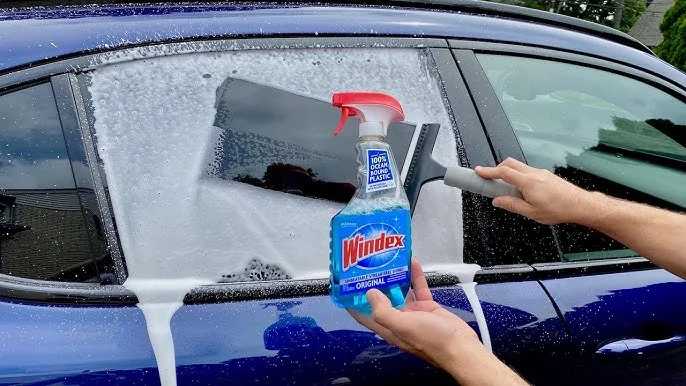To recycle laminated glass, carefully separate the layers of glass and plastic, then check with your local recycling center to see if they accept it. You can also consider specialized recycling facilities that handle such materials, ensuring it’s properly processed instead of ending up in a landfill. Recycling laminated glass helps reduce waste and conserves resources, but it requires some initial preparation to ensure it’s recyclable.
Laminated glass, often used in car windshields and windows, is a bit tricky to recycle due to its layered structure. However, with the right steps—like safely removing the plastic interlayer and finding the proper recycling facility—you can give this sturdy material a second life. Recycling not only benefits the environment but also promotes sustainable habits, so understanding how to handle laminated glass properly is more important than ever. If you’re wondering how to get started, don’t worry—there are simple ways to turn this durable material into something new and useful.
How to Recycle Laminated Glass: A Complete Guide
Understanding Laminated Glass and Its Composition
Laminated glass is made by bonding two or more glass sheets with a layer of polyvinyl butyral (PVB). This construction creates a strong, durable, and shatter-resistant material. Because of its layered structure, laminated glass poses unique challenges and opportunities for recycling.
The Importance of Recycling Laminated Glass
Recycling laminated glass reduces waste and conserves natural resources. It also prevents harmful substances from ending up in landfills. Recycling helps produce new glass products efficiently and sustainably, supporting environmental protection.
Challenges Associated with Recycling Laminated Glass
Laminated glass is more complex to recycle than regular glass because of the adhesive layer. The PVB layer makes the separation process more difficult. Contamination and damage to the PVB can further complicate recycling efforts.
Recycling Process for Laminated Glass
The recycling process involves several key steps:
- Collection and Sorting: Accept laminated glass from demolition sites, construction debris, or recycling centers. Proper sorting is essential to avoid contamination.
- Pre-processing: Remove any non-glass components such as frames, seals, or decorative elements.
- Crushing: Break the laminated glass into small pieces to facilitate separation.
- Separation of Layers: Use specialized equipment to separate the glass from the PVB layer. This step is crucial for high-quality recycling.
- Cleaning: Wash the glass fragments thoroughly to remove residual adhesives and contaminants.
- Melting and Reformation: Melt the cleaned glass at high temperatures, then mold or cool into new glass products.
Methods for Separating PVB from Glass
Separation techniques vary based on the equipment available and the desired purity of the recycled glass.
Mechanical Separation
Mechanical methods involve crushing and using screens or sieves to separate larger glass pieces from PVB remnants. These are less precise but cost-effective for large quantities.
Thermal Separation
Thermal processes heat the glass to melt the PVB layer, causing the materials to separate. This method requires sophisticated equipment and safety measures.
Chemical Separation
Chemical methods dissolve or degrade the PVB layer, freeing the glass particles. These techniques can be environmentally friendly if carefully managed but may involve chemical waste.
Innovative Technologies in Laminated Glass Recycling
Advancements include laser separation, which uses focused laser beams to split layers precisely. Additionally, automated systems with sensors improve separation efficiency and quality.
Where to Recycle Laminated Glass
Many recycling facilities accept laminated glass, especially those specializing in construction and industrial waste. Check with local recycling centers to see if they process laminated glass and follow their drop-off procedures.
Preparing Laminated Glass for Recycling
Before recycling, remove any frames, hardware, or non-glass components to prevent contamination. Rinse the glass with water to eliminate dirt or debris, ensuring a cleaner recycling process.
Environmental Benefits of Recycling Laminated Glass
Recycling reduces energy consumption by lowering the need for raw material extraction and processing. It also cuts down on greenhouse gas emissions and minimizes landfill usage.
Recycling Laminated Glass and Circular Economy
Recycling contributes to a circular economy by turning waste into usable raw materials. Recycled glass can be used for manufacturing new sheets, bottles, or decorative items, supporting sustainable development.
Alternative Uses for Recycled Laminated Glass
Recycled laminated glass can be repurposed into roadbed materials, aggregate for concrete, or decorative gravel. These options give new life to materials that might otherwise be discarded.
How to Promote Recycling of Laminated Glass
Raise awareness by educating the public and industry stakeholders. Provide clear recycling instructions and support policies that encourage proper disposal. Businesses can also participate in recycling programs and invest in better separation technologies.
Summary of Key Points on Recycling Laminated Glass
- Laminated glass is made with multiple layers, including PVB, which complicates recycling.
- The process involves collection, pre-processing, crushing, separation, cleaning, and re-melting.
- Technological advances improve separation efficiency and product quality.
- Proper preparation and awareness are essential for effective recycling.
- Recycling benefits the environment by saving energy and reducing waste.
Additional Topics Related to Laminated Glass Recycling
Environmental Regulations and Policies
Understanding local laws helps ensure compliant disposal and recycling practices. Many regions have regulations promoting recycling or banning the landfilling of laminated glass.
Cost Considerations in Recycling Laminated Glass
Recycling costs vary depending on the process, technology, and facility location. Investing in advanced separation equipment may increase upfront costs but improve long-term sustainability and product quality.
Partnership Opportunities for Recycling Laminated Glass
Collaboration between construction firms, waste management companies, and recycling centers can streamline collection and processing. Sharing resources and expertise boosts recycling rates.
Future Trends in Laminated Glass Recycling
Research focuses on developing environmentally friendly separation techniques and higher-quality recycled products. Innovations aim to make recycling more affordable and accessible worldwide.
Conclusion
Recycling laminated glass requires understanding its layered structure and employing specific processes to separate and reuse the materials. Advances in technology continue to improve recycling efficiency, making it an essential practice to reduce waste and protect the environment. By following proper procedures and supporting recycling initiatives, individuals and industries can contribute to a more sustainable future.
How to Recycle Laminated Glass: Windshield & Building Glass Separation Machine
Frequently Asked Questions
What are the steps to properly prepare laminated glass for recycling?
Start by carefully removing any frames or hardware attached to the laminated glass. Wear protective gloves to prevent injury from sharp edges. Next, clean the glass to remove dirt, adhesives, or other contaminants. Once clean, break the laminated glass into smaller, manageable pieces to facilitate transportation and handling. Finally, separate the glass layers if possible, as this can improve the recycling process and increase the quality of recycled materials.
Can I recycle laminated glass through local curbside recycling programs?
Most standard curbside recycling programs do not accept laminated glass because of its layered structure, which complicates processing. Check with your local recycling facility to see if they handle laminated glass or if they recommend disposing of it through specialized recycling centers. When in doubt, contacting local waste management services ensures your laminated glass gets recycled properly.
Are there specialized facilities that process laminated glass for recycling?
Yes, several facilities are equipped to recycle laminated glass. These plants use advanced techniques to separate the glass layers and process them into new raw materials. Such facilities often work with commercial or industrial sources of laminated glass and may not accept small quantities from individual consumers. Contact local recycling centers or waste management authorities to find out where you can send laminated glass for proper recycling.
Final Thoughts
To recycle laminated glass, start by carefully removing the laminate layer. Contact local recycling centers to confirm they accept this type of glass. Some facilities may require the glass to be broken into smaller pieces for easier processing.
Next, separate the glass from the plastic or film layer, if possible. Proper disposal involves following local regulations and guidelines for hazardous materials. Recycling laminated glass helps reduce waste and conserves resources.
In conclusion, understanding how to recycle laminated glass ensures responsible disposal and environmental protection. Proper recycling practices can make a significant difference in waste management efforts.



